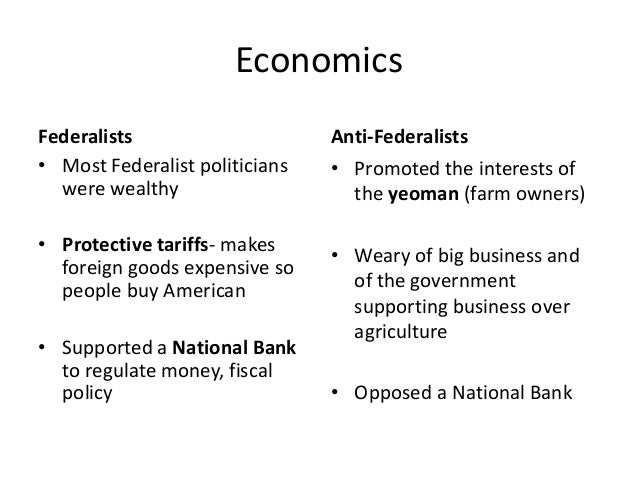
The Great Divide: Unraveling the Differences Between Federalists and Anti-Federalists
In the annals of American history, the heated debates surrounding the ratification of the Constitution ignited a profound ideological rift between two opposing factions: the Federalists and the Anti-Federalists. This pivotal moment shaped the foundations of our nation, and understanding the nuances that separated these groups is crucial for comprehending the complexities of America’s founding.
Defining the Federalists
The Federalists, led by the likes of Alexander Hamilton, James Madison, and George Washington, championed the adoption of a strong, centralized government. They believed that a robust federal government would promote economic growth, strengthen the nation’s defense, and foster unity among the disparate states. Federalists advocated for a constitution that would establish a powerful executive branch, a legislative body with broad authority, and a supreme court to interpret the law.
Anti-Federalist Sentiments
On the opposing side stood the Anti-Federalists, who viewed a strong central government with deep skepticism. Led by Patrick Henry, George Mason, and Samuel Adams, they feared that a distant and unaccountable government would encroach upon individual liberties and states’ rights. Anti-Federalists emphasized a decentralized approach to governance, with greater autonomy granted to the individual states.
The Bill of Rights: A Compromise
The ratification of the Constitution became a fiercely contested struggle, with both sides passionately defending their views. The Anti-Federalists’ primary concern was the lack of protections for individual rights in the proposed document. In response, the Federalists promised to include a Bill of Rights, a document explicitly enumerating the rights and freedoms of American citizens. This compromise swayed the balance in favor of ratification, and the Bill of Rights was subsequently adopted as the first ten amendments to the Constitution.
The Legacy of the Debate
The Federalist-Anti-Federalist debate left an enduring imprint on American politics. The tension between a strong central government and individual liberties has continued to shape constitutional interpretation and political discourse. The principles espoused by both sides continue to resonate in modern-day debates over the role of government, the scope of federal power, and the balance between unity and diversity.
The Latest Developments
In recent years, the Federalist-Anti-Federalist divide has re-emerged as a defining fault line in American politics. The rise of populism and the erosion of trust in government have reignited debates about the proper size and scope of federal authority. Anti-Federalist sentiments have gained traction among some conservative and libertarian groups who advocate for a more limited role for the federal government.
Expert Advice for Navigating the Divide
Navigating the complexities of the Federalist-Anti-Federalist divide requires a nuanced understanding of the arguments presented by both sides. Here are some tips for discerning the merits of opposing views:
- Consider the historical context: Examine the challenges and concerns that motivated the framers of the Constitution. Understanding the historical context of the debate provides a deeper appreciation for the perspectives of both Federalists and Anti-Federalists.
- Evaluate the evidence: Assess the arguments presented by both sides and scrutinize the evidence they provide. Avoid making judgments based solely on partisan or ideological lines.
- Seek diverse perspectives: Engage with individuals and groups who hold different views. Listen attentively to their arguments, and be willing to consider alternative perspectives.
Frequently Asked Questions
Q: What was the primary difference between Federalists and Anti-Federalists?
A: The primary difference lay in their views on the role of the federal government. Federalists advocated for a strong central government, while Anti-Federalists emphasized state sovereignty and individual liberties.
Q: How was the debate resolved?
A: The debate was resolved through the compromise of adding a Bill of Rights to the Constitution, which enumerated the rights of citizens and limited the powers of the federal government.
Q: Is the Federalist-Anti-Federalist debate still relevant today?
A: Yes, the principles espoused by both sides continue to shape constitutional interpretation and political discourse. Debates over the size and scope of government and the balance between unity and diversity reflect the enduring legacy of the Federalist-Anti-Federalist divide.
Conclusion
The Federalist-Anti-Federalist debate was a defining moment in American history, pitting two opposing ideologies against each other. Understanding the nuances that separated these groups provides a valuable lens through which to view the complexities of our nation’s founding. By examining the arguments, considering the historical context, and embracing diverse perspectives, we can navigate the complexities of this enduring debate and foster a more informed understanding of the principles that shape our society.
Are you interested in learning more about the Federalist-Anti-Federalist debate? Explore our related resources for further insights and perspectives.

Source Image: www.slideshare.net

Source Image: www.slideshare.net
Source Image: www.slideshare.net
Thank you for taking the time to delve into this topic. What Is The Difference Between Anti Federalist And Federalist, offers valuable knowledge to enhance your insight.